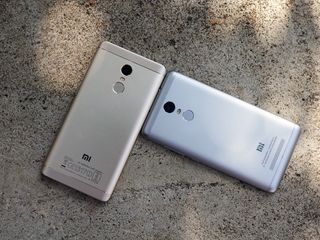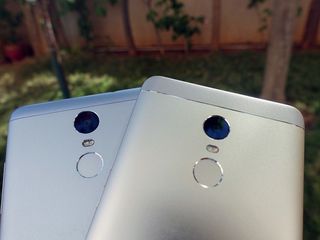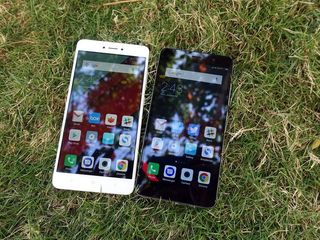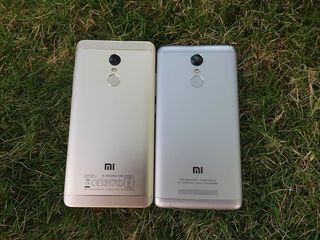Xiaomi Redmi Note 4 vs. Redmi Note 3: Should you upgrade?

Xiaomi saw a revival in its fortunes in 2016 on the back of the Redmi Note 3. The phone made its debut at the start of last year for a compelling ₹9,999 for the base variant and sold over 3.6 million units in just over 10 months.
For 2017, Xiaomi is betting on the Redmi Note 4 to drive sales in the budget segment. The phone offers similar specs, but eschews the 28nm Snapdragon 650 for a more energy-efficient 14nm Snapdragon 625. Xiaomi is also offering a model with 4GB of RAM and 64GB storage for the first time, and the base variant retains the ₹9,999 price tag, while offering 32GB of onboard memory.
Xiaomi is essentially competing with itself in this segment. The Redmi Note 3 offered unmatched value for money, and Xiaomi was always going to have a difficult time coming up with a successor that outdid its best-selling phone of 2016. To that effect, Xiaomi didn't change a lot with the Redmi Note 4 in terms of the specs, instead making improvements in other areas. As such, the notable changes on the Redmi Note 4 include a better camera and polished design. Read on to find out if the changes make the Redmi Note 4 a worthy successor.
Hardware

There are minor design variations between the Redmi Note 3 and the Redmi Note 4. Both phones offer great metal designs with excellent build quality, but the overall finish is more polished on the newer device. The Redmi Note 3 has a matte back, while its successor sports a smoother texture. The back of the Redmi Note 4 is contoured as well, resulting in a better in-hand feel.
The Redmi Note 4 has great hardware and a premium design.
Both phones look very similar from the back, with the camera sensor, LED flash, and the fingerprint sensor aligned in a straight line. The major difference is the position of the speaker, which is located at the bottom of the Redmi Note 4.
Xiaomi has speaker grilles on either side of the microUSB port, but the phone comes with a single speaker. The grille on the left is purely for aesthetic reasons. The position of the speaker means that you can hear incoming calls, and there's a noticeable improvement in audio quality as well. The speaker gets very loud, and audio isn't distorted at high volumes.





The Redmi Note 3 has a small indent below the speaker grille to prevent the sound from getting muffled when the phone is placed on a surface, but it doesn't work in practice. With the Redmi Note 4, that particular issue has been resolved.
Be an expert in 5 minutes
Get the latest news from Android Central, your trusted companion in the world of Android
| Category | Xiaomi Redmi Note 4 | Xiaomi Redmi Note 3 |
|---|---|---|
| Operating System | MIUI 8 based on Android 6.0.1 Marshmallow | MIUI 8 based on Android 6.0.1 Marshmallow |
| Display | 5.5-inch 1080p (1920x1080) IPS LCD panel 401ppi pixel density | 5.5-inch 1080p (1920x1080) IPS LCD panel 401ppi pixel density |
| SoC | Octa-core Qualcomm Snapdragon 625 Eight Cortex A53 cores at 2.0GHz 14nm | Hexa-core Qualcomm Snapdragon 650 Two Cortex A72 cores at 1.8GHz Four Cortex A53 cores at 1.4GHz 28nm |
| GPU | Adreno 506 | Adreno 510 |
| RAM | 2GB/3GB/4GB RAM | 2GB/3GB RAM |
| Storage | 32GB/64GB storage microSD slot up to 256GB | 16GB/32GB storage microSD slot up to 256GB |
| Rear camera | 13MP dual LED flash PDAF | 16MP dual LED flash PDAF |
| Front shooter | 5MP 1080p video recording | 5MP 1080p video recording |
| Connectivity | Wi-Fi 802.11b/g/n, Bluetooth 4.1 (A2DP), GPS, microUSB, 3.5mm audio jack | Wi-Fi 802.11b/g/n, Bluetooth 4.1 (A2DP), GPS, microUSB, 3.5mm audio jack |
| Battery | 4100mAh battery | 4050mAh battery |
| Fingerprint | Rear fingerprint sensor | Rear fingerprint sensor |
| Dimensions | 151 x 76 x 8.5mm | 150 x 76 x 8.7mm |
| Weight | 175g | 164g |
| Colors | Silver, Gold, Black | Silver, Gold, Dark Grey |
The Redmi Note 3 is offered in two storage variants — a model with 2GB of RAM and 16GB storage for ₹9,999, and a version with 3GB of RAM and 32GB storage for ₹11,999. Meanwhile, the Redmi Note 4 is sold in three configurations:
Both phones offer decent panels, with the Redmi Note 4 outmatching its predecessor in terms of overall contrast. Sunlight legibility is also better on the Redmi Note 4, and the phone does an admirable job of turning down brightness at night.
Xiaomi offers the ability to change color temperature and contrast levels for both phones, and you also get a blue-light filter mode and the ability to adjust font size. The Redmi Note 4 has an added trick in the form of double tap to wake, which is missing from its predecessor.
Benchmarks

A lot has been written about the SoC of choice on the Redmi Note 4 and how it isn't as powerful as the Snapdragon 650 on the Redmi Note 3. The issue stems from the fact that the Snapdragon 625 does not have the newer Cortex A72 cores, instead offering eight first-gen Cortex A53 cores.
The GPU is also a point of contention, with the Adreno 506 on the Redmi Note 4 said to be a downgrade from the Redmi Note 3's Adreno 510. Synthetic benchmarks also show that the Redmi Note 3 is faster both at GPU and CPU computing. That said, you won't notice any difference in day-to-day usage between the Redmi Note 3 and Redmi Note 4, with both phones offering similar performance in visually-demanding titles.
Camera

One of the main areas of focus for Xiaomi with the Redmi Note 4 is the camera quality. The Redmi Note 4 has a 13-megapixel camera sensor that's sourced from Samsung and Sony, while the Redmi Note 3 offers a 16MP camera. Although the resolution is less, the camera sensor is of a higher quality on the Redmi Note 4, leading to much better images.
The Redmi Note 4 wins out over its predecessor in camera quality.
Both phones have PDAF and dual-tone LED flash and are limited to 1080p video. On the front, both sport 5MP shooters.
Images from the Redmi Note 3 are washed out and lack accurate colors, and in this regard, the Redmi Note 4 fares much better. Focusing is also an issue on the Redmi Note 3, as the autofocus tends to take a while to dial in on a subject. The situation is even worse in low-light conditions, with images coming out lacking detail and full of noise.


Redmi Note 3 on the left, Redmi Note 4 on the right. Images shot in auto mode with HDR off.








Thankfully, Xiaomi's efforts in this area have paid off, with the Redmi Note 4 excelling in brightly lit conditions and low-light scenarios. Overall, the camera on the Redmi Note 4 is a considerable upgrade from that of the Redmi Note 3, and the phone holds its own in the budget segment.
Software

Both the Redmi Note 4 and Redmi Note 3 run a Marshmallow-based build of MIUI 8, which continues to be highly customizable. While there are niggles on both phones, the feature-rich interface overshadows the few drawbacks.
You get a host of features including Dual Apps, Second Space, scrolling screenshot, built-in video editor, currency converter, and so much more. Xiaomi has done a great job of rolling out monthly updates, with the Redmi Note 4 on the December patch and the Redmi Note 3 on the November update. The fast release cadence of MIUI updates allows the manufacturer to bundle security patches with maintenance fixes.
Both phones run MIUI 8, but the Redmi Note 4 will receive Nougat first.
There isn't much to differentiate between either device when it comes to the software, but that changes when we talk about the update situation. The Redmi Note 4 is slated to pick up the Nougat update shortly, with Xiaomi offering a preview build for download. The Nougat update is based on MIUI 8, and as such there won't be a lot of difference visually over what's already available. That said, the update will include a retooled notification area with inline replies, multi-window mode, and mush more.
The Redmi Note 3 should also pick up the update in the coming months, but as of now there's no mention as to when it will be available for the device.
Battery life

Battery life on both phones is stellar on account of the large batteries and MIUI's aggressive memory management. You'll easily get a day's worth of battery on either handset, and overall, the Redmi Note 4 has a slight edge over its predecessor due to the larger 4,100mAh battery (versus 4,050mAh) and the 14nm SoC.
It isn't hard to get over 7 hours of screen-on-time on the Redmi Note 4, and if your usage involves a few hours of browsing and streaming videos, you'll easily be able to eke out two days' worth of usage from a full charge. The downside is that you don't get any fast charging options. Both phones top out at 5V/2A, which is equivalent to Quick Charge 1.0 speeds. As such, it takes up to 2 hours to fully charge either phone.
Which should you buy? Redmi Note 4
The Redmi Note 4 comes out as the clear favorite over its predecessor, thanks to the vastly improved camera, premium design, and increased battery life.
If you already have a Redmi Note 3, then it doesn't make a lot of sense to get the Redmi Note 4, unless camera quality is your primary consideration. The Redmi Note 3 has aged very well and continues to be one of the best bargains in this segment a full year and a half after its unveiling.
If you're looking to buy a new phone for under ₹15,000, the Redmi Note 4 should be high on your list. The variant with 4GB of RAM and 64GB storage costs ₹12,999, and you'll have enough left over to pick up a few accessories.

Harish Jonnalagadda is a Senior Editor overseeing Asia at Android Central. He leads the site's coverage of Chinese phone brands, contributing to reviews, features, and buying guides. He also writes about storage servers, audio products, and the semiconductor industry. Contact him on Twitter at @chunkynerd.